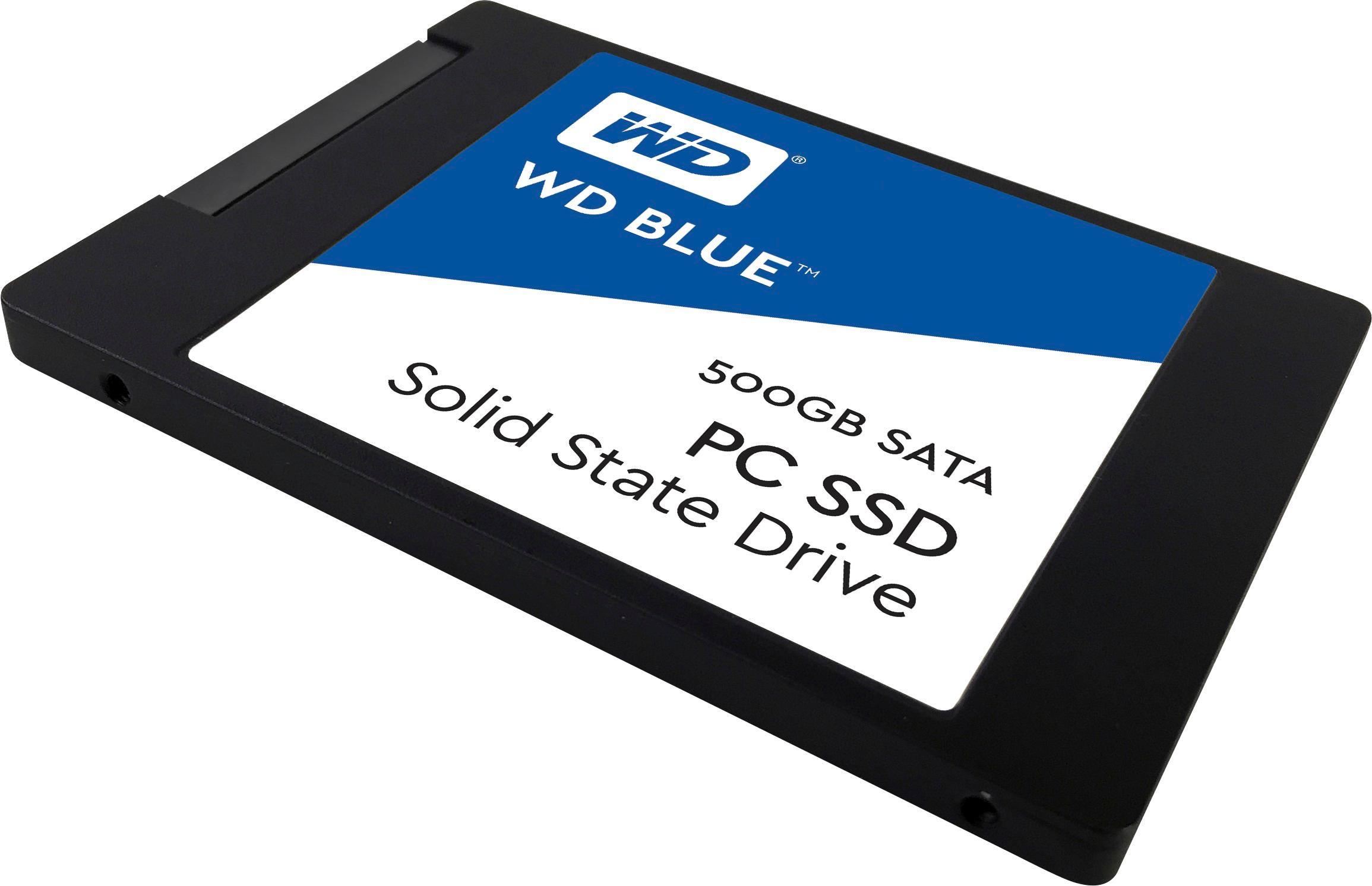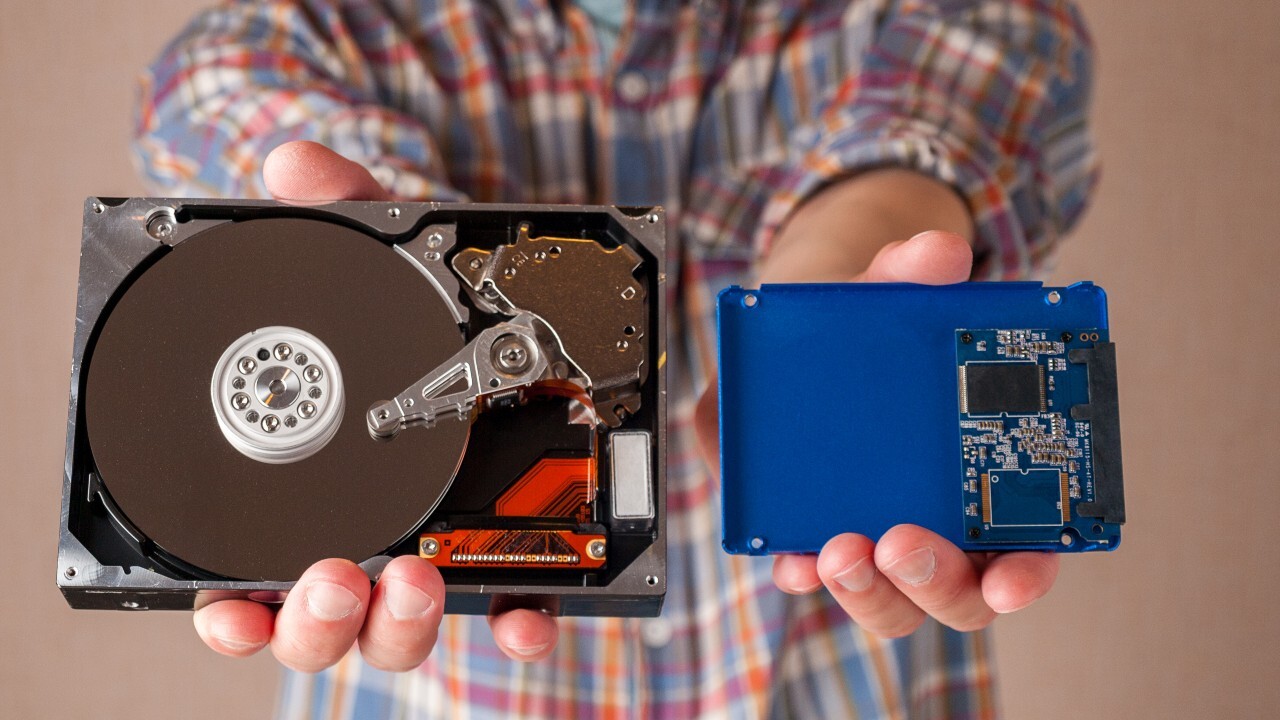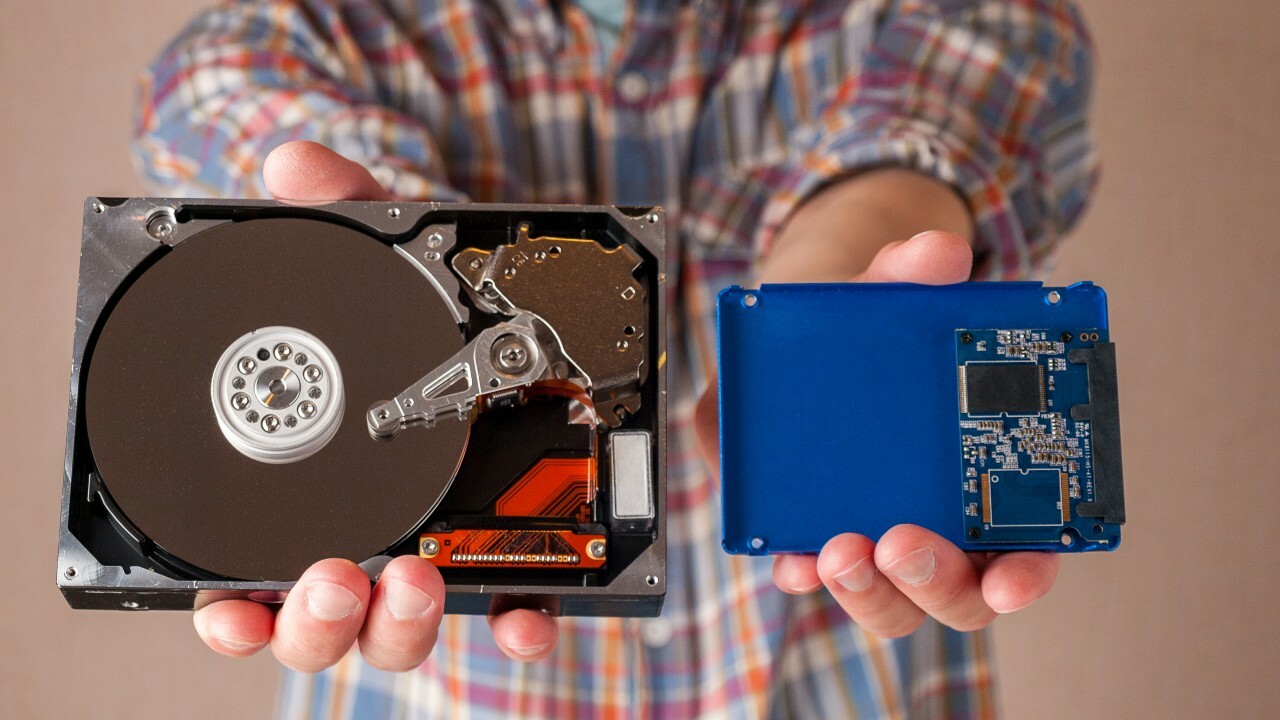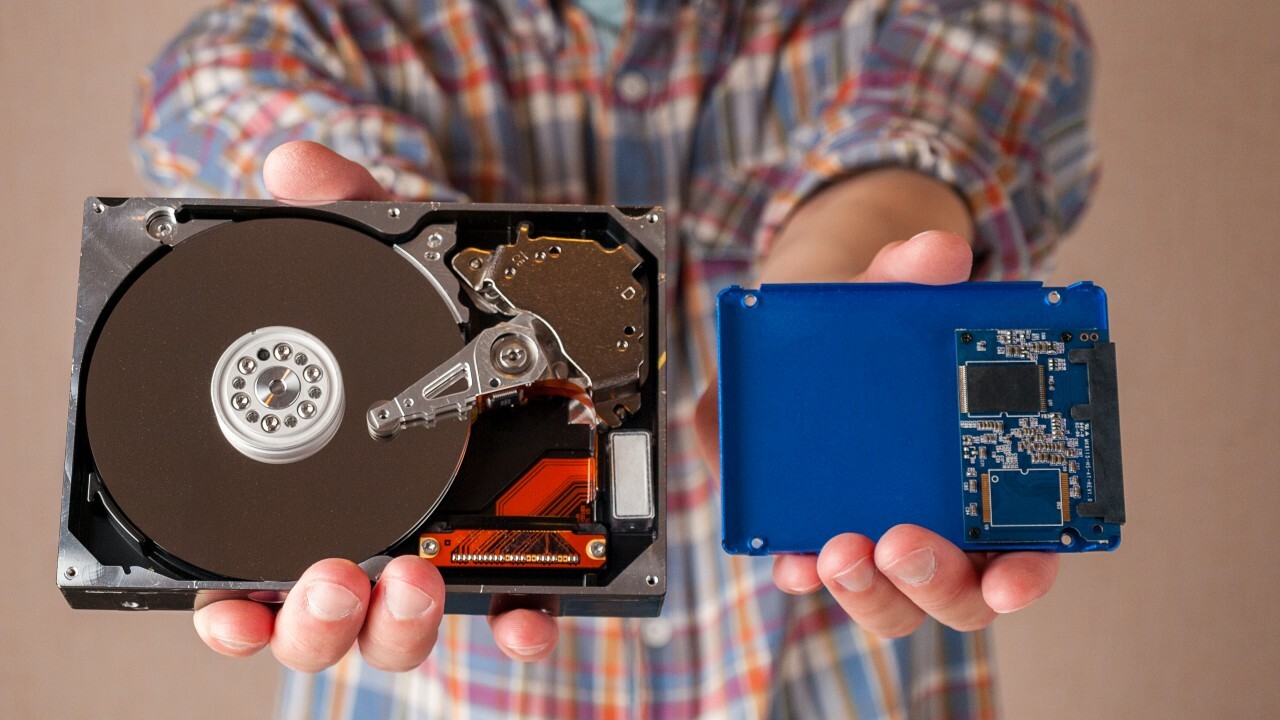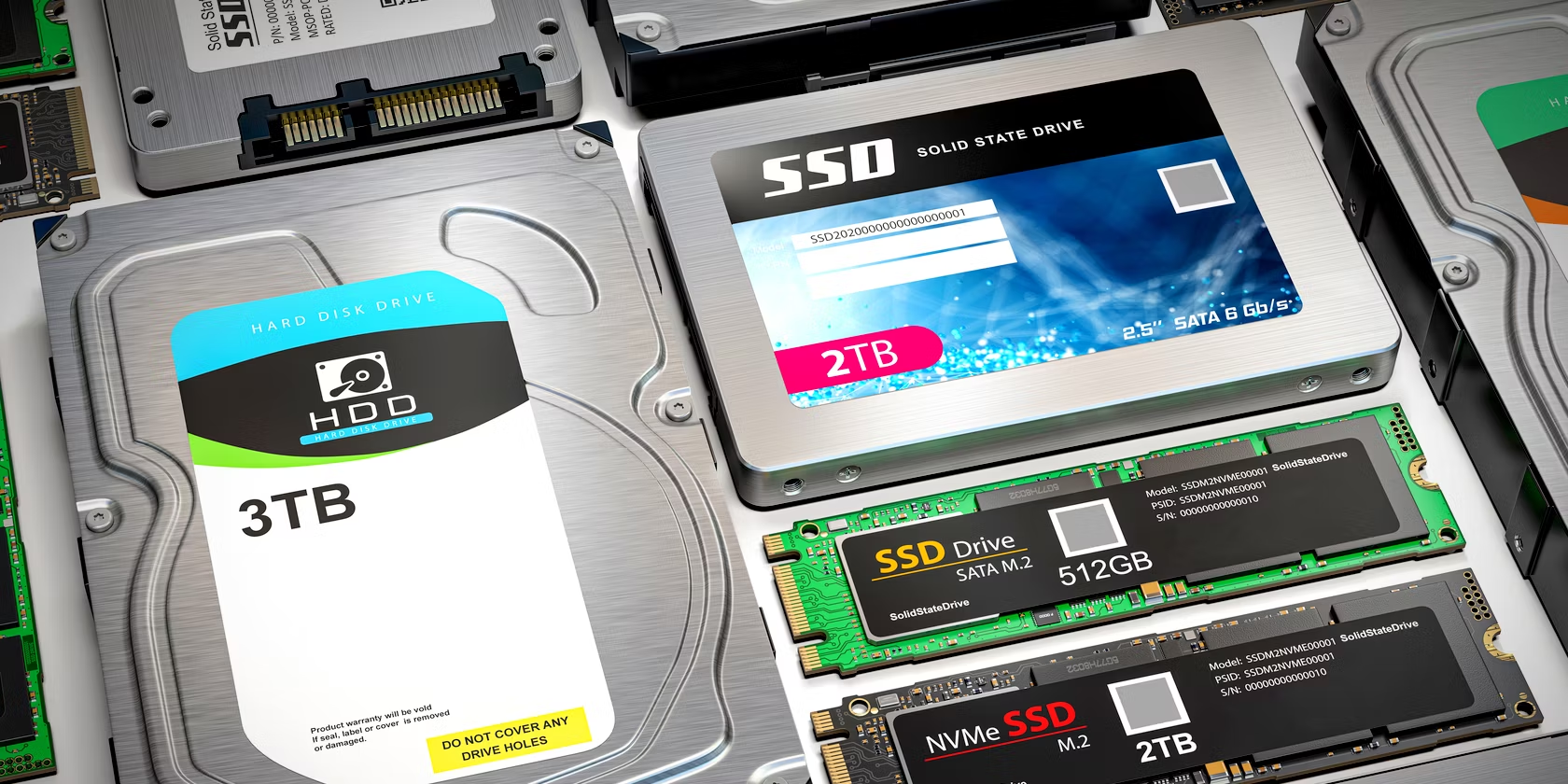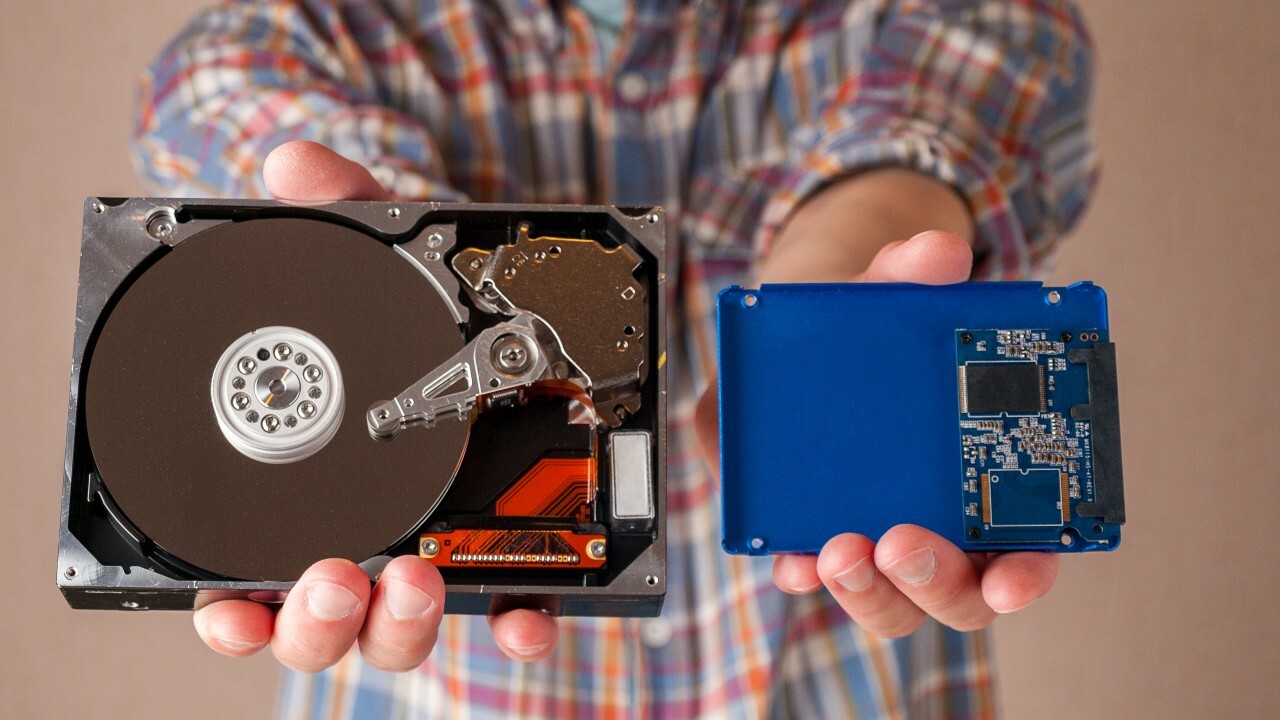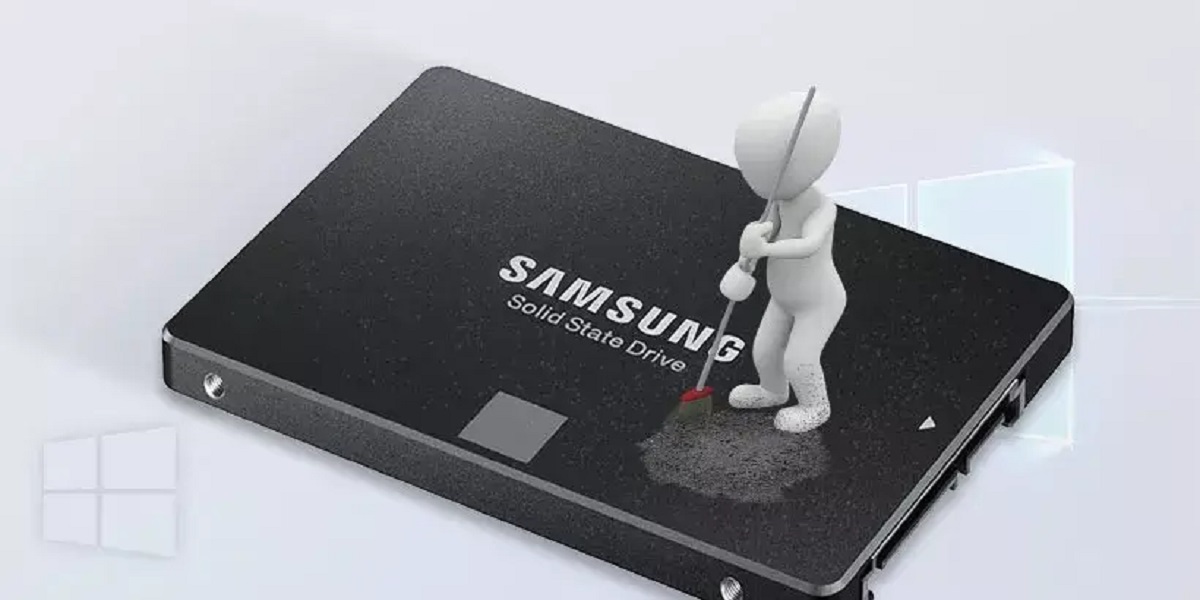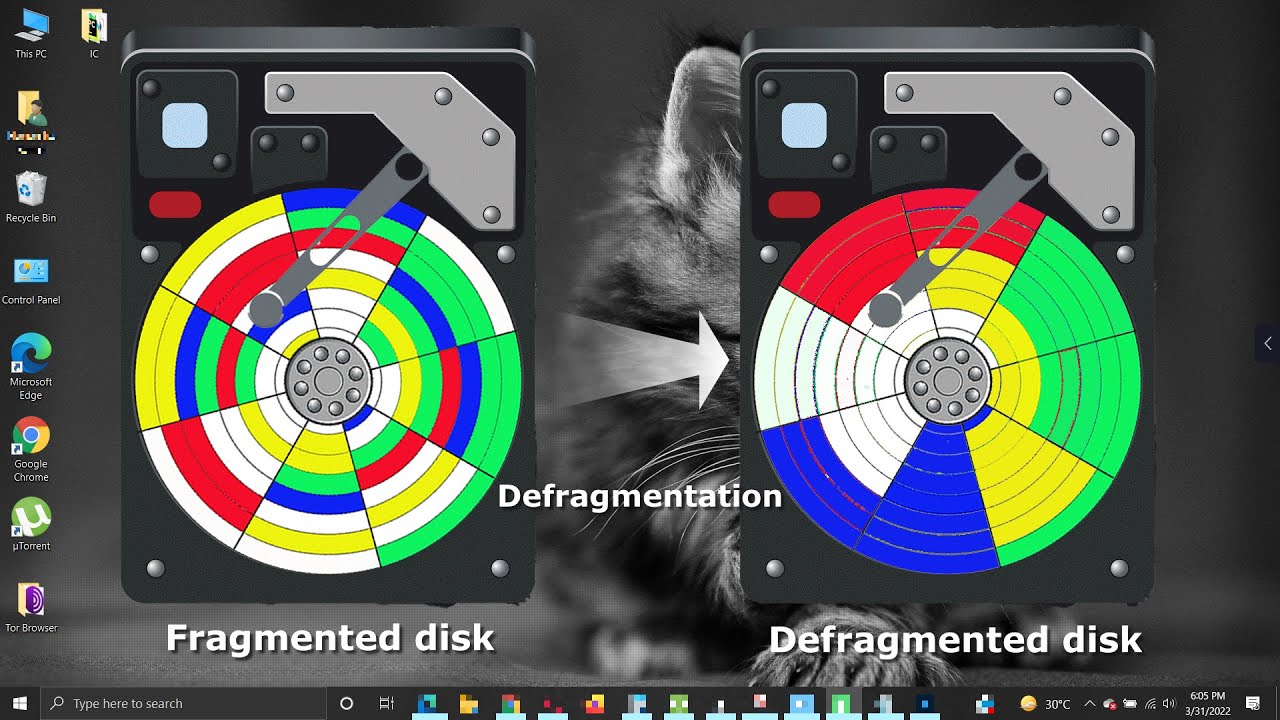Introduction
As technology continues to advance, the storage industry has seen a significant shift from traditional hard disk drives (HDDs) to solid state drives (SSDs). SSDs offer faster performance, improved durability, and increased reliability compared to their HDD counterparts. With these benefits, many users have transitioned to using SSDs as their primary storage solution.
One common practice for optimizing the performance of traditional HDDs is defragmentation. This process rearranges fragmented data on the disk, resulting in improved read and write speeds. However, when it comes to SSDs, the story is quite different. Unlike HDDs, SSDs do not rely on moving mechanical parts to access data.
In this article, we will explore the reasons why solid state drives are not defragmented. We will delve into the unique characteristics of SSDs, the way they handle data storage, and the advanced technologies that make defragmentation unnecessary.
By understanding how SSDs work and the reasons why defragmentation is not recommended, users can effectively optimize the performance of their SSDs and get the most out of their storage investment.
What is a solid state drive (SSD)?
A solid state drive, commonly known as an SSD, is a type of storage device that uses flash memory to store and retrieve data. Unlike traditional hard disk drives (HDDs), which utilize spinning magnetic disks and mechanical read/write heads, SSDs have no moving parts. This fundamental difference in design results in several key advantages for SSDs over HDDs.
SSDs offer significantly faster data access and transfer speeds compared to HDDs. This is because the lack of moving parts allows data to be accessed almost instantly, eliminating the delays associated with the mechanical movements required by HDDs. As a result, applications load faster, files are accessed more quickly, and the overall system responsiveness is greatly improved.
Besides speed, SSDs also excel in terms of reliability and durability. Since there are no moving parts, there is reduced risk of mechanical failure, such as disk platter crashes or head misalignment. This makes SSDs less prone to data loss and increases the lifespan of the drive.
Furthermore, SSDs are much more resistant to physical shock and vibration, making them the ideal choice for portable devices such as laptops and tablets. The absence of moving parts also results in decreased power consumption, generating less heat and extending battery life.
SSDs come in various form factors, including the traditional 2.5-inch size that is compatible with most laptops and desktops, as well as smaller M.2 and PCIe form factors that are commonly used in ultrabooks and gaming PCs.
In summary, a solid state drive (SSD) is a storage device that utilizes flash memory and has no moving parts. It offers faster speeds, greater reliability, enhanced durability, and reduced power consumption compared to traditional hard disk drives (HDDs). These advantages have made SSDs the preferred choice for users seeking improved performance and efficiency in their storage solutions.
How does fragmentation occur on traditional hard drives?
Fragmentation occurs on traditional hard disk drives (HDDs) as a result of the way data is written and deleted on the disk. When files are created or modified, the data is stored in contiguous blocks on the disk. Over time, as files are added, deleted, or modified, the free space between these blocks becomes fragmented or scattered throughout the disk.
As a result of this fragmentation, the read/write heads of the HDD need to access multiple areas of the disk to retrieve a single file, leading to increased seek times. These additional movements of the read/write heads can result in reduced performance and slower data access speeds.
Fragmentation can occur in two ways:
- External fragmentation: This occurs when free space is scattered throughout the disk and is not contiguous. When a file is created or modified, the operating system looks for contiguous free space to allocate it. If contiguous space isn’t available, the file is stored in non-contiguous blocks, causing external fragmentation.
- Internal fragmentation: This occurs when the allocated space for a file is larger than the actual file size. It happens because file systems allocate space in fixed block sizes, and if the file’s size is not an exact multiple of the block size, the remaining space within the allocated block is wasted, resulting in internal fragmentation.
As fragmentation increases, the performance of the HDD degrades further. The read/write heads have to move across multiple parts of the disk to access a single file, which increases the average seek time. This increased seek time results in slower file access speeds and can have a negative impact on overall system performance.
To mitigate and minimize the effects of fragmentation on traditional hard drives, regular defragmentation is recommended. Defragmentation rearranges the fragmented data on the disk, consolidating the free space and placing files in contiguous blocks, thus improving read and write speeds. However, the process of fragmentation and defragmentation does not directly apply to solid state drives (SSDs), as we will explore in the following sections.
How does an SSD handle data storage differently?
An SSD handles data storage differently compared to traditional hard disk drives (HDDs) due to its unique underlying technology and design. Unlike HDDs, SSDs do not rely on mechanical moving parts to read and write data.
Instead, an SSD utilizes a technology called flash memory. Flash memory is a type of non-volatile storage that retains data even when power is removed. In SSDs, flash memory is organized into individual memory cells, each of which can store a certain amount of data.
When data is written to an SSD, it is stored in these memory cells using an electrical charge. Each memory cell can hold multiple bits of data, with the number of bits per cell determining the storage capacity of the drive. The most common type of flash memory used in modern SSDs is NAND flash.
Whereas traditional HDDs store data on spinning disks with read/write heads moving across the surface, SSDs can access data directly from any memory cell on the drive. This eliminates the need for physical movements, resulting in faster and more efficient data retrieval.
Furthermore, SSDs do not suffer from the same fragmentation issues that plague HDDs. Since data can be accessed from any memory cell equally fast, it does not matter if the data is stored in contiguous or non-contiguous locations. As a result, there is no performance degradation due to fragmentation, making regular defragmentation unnecessary for SSDs.
The lack of mechanical components in SSDs also contributes to their durability and resilience. Without moving parts, SSDs are less susceptible to physical damage caused by drops, shocks, or vibrations. The absence of mechanical movements also means that SSDs generate less heat and consume less power compared to HDDs, resulting in improved energy efficiency.
In summary, SSDs handle data storage differently from traditional HDDs. They utilize flash memory technology, eliminating the need for mechanical moving parts. This allows for faster data access, increased reliability, and improved energy efficiency. Additionally, SSDs do not suffer from fragmentation issues, making defragmentation unnecessary for maintaining optimal performance.
The nature of flash memory
Flash memory is a key component of solid state drives (SSDs) and plays a crucial role in how these storage devices function. Understanding the nature of flash memory helps in comprehending the unique characteristics and advantages of SSDs.
Flash memory is a type of non-volatile storage that retains data even without power. It is made up of a series of memory cells that can store electrical charges. These memory cells are organized into blocks, which are further grouped into pages.
Each memory cell in flash memory has a limited number of times it can be programmed and erased, known as program-erase cycles. The endurance of flash memory is measured in terms of the number of program-erase cycles it can reliably withstand. While modern flash memory is built to have a high endurance, it is important to keep in mind the limited lifespan of these cells.
Flash memory operates on the principle of tunneling effect. When data needs to be written to flash memory, a voltage is applied to the memory cell, creating an electric field that allows electrons to be trapped in the floating gate within the cell. This trapped charge represents the stored data. Similarly, to erase the data, a voltage is applied to the cell that removes the trapped charge.
One notable characteristic of flash memory is that it can only be erased in blocks. This means that if a single bit of data needs to be erased, the entire block containing that bit must be cleared. This behavior has implications for how data is written and stored in flash memory.
When new data is written to flash memory, the cells are programmed with the desired information. However, updating or modifying existing data is more complex. Instead of overwriting the existing data directly, the cells must be erased first and then reprogrammed with the updated information. This process is called the erase-rewrite cycle.
The erase-rewrite cycle of flash memory introduces a phenomenon called write amplification. It occurs because the entire block must be erased before new data is written. Consequently, the total amount of data written to the flash memory is greater than the actual data amount being updated, leading to increased wear on the cells and reduced lifespan.
Manufacturers mitigate the impact of write amplification and prolong the life of the flash memory by implementing sophisticated techniques such as wear leveling and TRIM.
In summary, flash memory is a non-volatile storage technology used in SSDs. It consists of memory cells organized into blocks and pages. Flash memory operates based on the principles of program-erase cycles and the tunneling effect. Understanding the unique nature of flash memory is crucial in optimizing the performance and lifespan of SSDs.
TRIM technology and wear leveling
TRIM technology and wear leveling are two key features implemented in solid state drives (SSDs) to optimize their performance and increase their lifespan. These technologies address specific challenges associated with flash memory, ensuring that SSDs maintain their performance and longevity over time.
TRIM technology is a command that allows the operating system to inform the SSD which blocks of data are no longer in use. When files are deleted or modified, TRIM ensures that the SSD marks those blocks as free, enabling the SSD to proactively manage its memory cells and maintain optimal performance. Without TRIM, deleted files are not immediately recognized as free space by the SSD, resulting in slower write speeds and decreased overall performance.
By utilizing TRIM, SSDs can perform more efficient garbage collection. Garbage collection involves consolidating blocks of erased data and reclaiming them as free space. When TRIM is employed, the SSD can preemptively identify and mark blocks as available, reducing the need for time-consuming garbage collection during write operations. This helps to maintain consistent write speeds and prolong the life of the SSD.
Wear leveling is another important technology employed in SSDs. Flash memory cells have a limited number of program-erase cycles before they start to degrade. Certain cells can wear out faster than others if they are constantly used for read or write operations. Wear leveling helps distribute these operations evenly across the entire SSD, ensuring that no individual cells are excessively used and preventing premature wear. This technique helps to increase the lifespan and reliability of the SSD.
Wear leveling works by dynamically mapping logical addresses to physical addresses within the SSD. It ensures that different physical memory cells are used to store data from the same logical addresses, allowing the SSD to spread the operations evenly across the memory cells. This way, the degradation of any specific memory cell is minimized, and the overall endurance of the SSD is optimized.
Both TRIM technology and wear leveling are essential for maintaining the long-term performance and reliability of SSDs. TRIM enables the SSD to efficiently manage its memory cells and maintain optimal write speeds, while wear leveling ensures that the usage of the memory cells is evenly distributed to increase the lifespan of the device.
It is worth noting that TRIM may require operating system support, and wear leveling mechanisms can vary between different SSD models and manufacturers. Therefore, it is advisable to ensure that TRIM is enabled and to choose a reputable and reliable SSD brand to maximize the benefits of these technologies.
Why defragmenting an SSD is unnecessary
Defragmentation, a process of rearranging fragmented data on a disk, is a common practice for optimizing the performance of traditional hard disk drives (HDDs). However, when it comes to solid state drives (SSDs), defragmentation is unnecessary, and in fact, can be detrimental to the drive’s performance and lifespan.
Unlike HDDs, which rely on mechanical read/write heads to access data stored on spinning disks, SSDs use flash memory technology. SSDs have no physical constraints on data access, allowing them to retrieve data from any memory cell with virtually no differences in read speeds.
One of the primary reasons why defragmentation is unnecessary for SSDs is because fragmentation does not impact their performance in the same way it does with HDDs. Since SSDs can access any memory cell at the same speed, there is no need for data to be stored in contiguous blocks. In other words, the physical location of data has no impact on read or write speeds for SSDs.
In fact, defragmenting an SSD can have negative effects. SSDs have a limited number of program-erase cycles, which means that each memory cell can only be written and erased a finite number of times before it degrades. Defragmentation involves continuous writing and rewriting of data, which can quickly wear out the memory cells unnecessarily.
Furthermore, defragmentation can hinder the performance of an SSD by causing unnecessary write operations. Since SSDs operate on an erase-rewrite cycle, where data must be erased before writing new data, defragmentation can increase the number of write operations performed on the SSD. Not only does this reduce the drive’s lifespan, but it also consumes valuable write endurance, resulting in decreased overall performance.
Modern operating systems, recognizing the nature and requirements of SSDs, often include built-in features to optimize their performance without the need for defragmentation. For example, the TRIM command, as mentioned earlier, helps SSDs to proactively manage and maintain performance by allowing the operating system to inform the SSD about unused blocks of data.
Given these factors, defragmenting an SSD is not recommended and can potentially have adverse effects on the drive’s performance and lifespan. It is advisable to rely on the built-in optimization features of the operating system and trust in the self-maintenance capabilities of SSDs to ensure optimal performance and longevity.
The potential drawbacks of defragmenting an SSD
While defragmentation can be beneficial for traditional hard disk drives (HDDs), it is important to understand that defragmenting a solid state drive (SSD) can have potential drawbacks. SSDs have unique characteristics and technologies that make defragmentation unnecessary and, in some cases, detrimental to the drive’s performance and lifespan.
One of the major drawbacks of defragmenting an SSD is the increased wear on the memory cells. SSDs have a finite number of program-erase cycles before their performance and reliability degrade. Since defragmentation involves continuous writing and rewriting of data, it can significantly reduce the lifespan of an SSD by unnecessarily wearing out the memory cells. This can lead to a reduced overall endurance and a shorter lifespan for the drive.
Defragmentation can also be time-consuming and resource-intensive. While an SSD does not suffer from performance degradation due to fragmentation, the process of defragmentation itself can still consume system resources. It requires a significant amount of read and write operations, which can impact the overall performance of the system during the defragmentation process. This can lead to a slower overall system performance and potentially longer downtime for the user.
Additionally, defragmentation may not provide any noticeable performance benefits for SSDs. As mentioned earlier, SSDs can access data from any memory cell equally fast, regardless of its physical location on the drive. The random nature of data access in SSDs renders defragmentation unnecessary. While defragmentation aims to rearrange data in contiguous blocks, this process does not result in any noticeable performance improvement for SSDs. Therefore, the time and effort invested in defragmenting an SSD may not yield any significant performance gains.
Moreover, defragmentation may cause unnecessary write operations on an SSD, resulting in increased write amplification. Write amplification refers to the additional data written to the drive during the process of defragmentation. This can reduce the drive’s lifespan and increase the wear on the memory cells. The increased number of write operations as a result of defragmentation can lead to decreased overall performance and potentially shorten the SSD’s lifespan.
Given these potential drawbacks, it is generally recommended to avoid defragmenting an SSD. The self-maintenance capabilities of SSDs, coupled with technologies like TRIM and wear leveling, ensure that the drive operates optimally without the need for defragmentation. It is best to rely on the built-in optimization features of the operating system and let the SSD manage its data storage effectively to maintain performance and increase longevity.
Best practices for optimizing SSD performance
While defragmentation is unnecessary for solid state drives (SSDs), there are several other best practices that can help optimize the performance and longevity of an SSD. These practices leverage the unique characteristics of SSDs and ensure that they operate at their full potential.
1. Enable TRIM: TRIM is a crucial feature for SSDs as it allows the operating system to inform the drive about unused blocks of data. Enabling TRIM ensures that the SSD can proactively manage its memory cells and maintain optimal performance.
2. Keep the firmware up to date: SSD manufacturers frequently release firmware updates that address performance improvements and fix potential issues. It is important to regularly check for firmware updates and apply them to the SSD to take advantage of any enhancements.
3. Avoid filling the drive to its capacity: SSDs operate more efficiently when they have free space available. Avoid filling the drive to its maximum capacity and aim to keep at least 10-15% of the drive’s capacity free. This allows the SSD to perform background garbage collection and wear leveling more effectively.
4. Minimize unnecessary write operations: SSDs have a limited number of program-erase cycles. Minimizing unnecessary write operations can help prolong the lifespan of the drive. Consider redirecting write-intensive applications or temporary files to a separate hard drive to reduce unnecessary writes on the SSD.
5. Disable hibernation: Hibernation writes the contents of RAM to the drive, which can result in frequent write operations. Disabling hibernation or reducing the hibernation file size can minimize unnecessary writes and help preserve the longevity of the SSD.
6. Regularly update and run antivirus scans: While SSDs are not prone to fragmenting files, they can still be affected by malware or viruses. Keeping your antivirus software up to date and performing regular scans can help ensure the SSD remains secure and optimized.
7. Backup data regularly: Although SSDs are generally reliable, data loss can still occur due to various factors. It is essential to create regular backups of important data to a separate storage device to protect against unforeseen circumstances.
8. Maintain a proper operating temperature: SSDs generate less heat than traditional hard drives but can still be affected by high temperatures. Keeping the drive operating within the recommended temperature range can help ensure optimal performance and prevent potential damage.
9. Choose an adequate SSD for the intended usage: Different SSD models have varying performance characteristics and endurance levels. Consider the specific requirements and usage patterns when selecting an SSD to ensure it meets the needs of the intended workload.
Incorporating these best practices into your SSD usage can help maximize its performance, longevity, and overall efficiency. By taking advantage of the unique features and technologies specific to SSDs, you can ensure that your storage solution operates optimally for years to come.
Conclusion
Solid state drives (SSDs) have revolutionized the storage industry with their superior performance, durability, and reliability compared to traditional hard disk drives (HDDs). Understanding how SSDs function and implementing appropriate optimization practices is crucial for getting the most out of these advanced storage devices.
Unlike HDDs, SSDs do not suffer from the same fragmentation issues that necessitate defragmentation. The unique characteristics of SSDs, such as their lack of moving parts and the use of flash memory, make defragmentation unnecessary and potentially detrimental to their performance and lifespan.
Instead of defragmenting an SSD, users should focus on enabling TRIM, keeping the firmware up to date, maintaining free space on the drive, minimizing unnecessary write operations, and following other recommended best practices. These strategies help optimize SSD performance, mitigate wear on the memory cells, and prolong the lifespan of the drive.
Furthermore, leveraging technologies such as wear leveling and taking advantage of the self-maintenance capabilities of modern operating systems can ensure that SSDs operate at their full potential. Regularly updating firmware, performing antivirus scans, and maintaining a proper operating temperature are also essential for maximizing SSD performance and longevity.
By following these best practices, users can enjoy the benefits of faster data access, increased reliability, and extended lifespan that SSDs offer. The efficient and reliable performance of SSDs allows for a seamless computing experience and supports the growing demands of today’s digital world.
In the ever-evolving landscape of storage technology, SSDs have emerged as a game-changer. Embracing the unique features and optimization methods specific to SSDs empowers users to fully utilize these powerful and efficient storage solutions.







